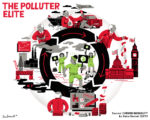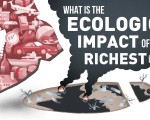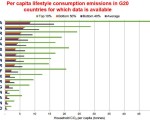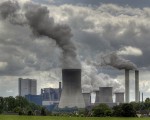
Dario Kenner, June 2019 We are currently at a moment of extreme and rising inequality in many countries around the world. Rarely are the links made between the extremely wealthy and the personal liability these individuals have in contributing to potentially irreversible climate change and […]

A more nuanced understanding is needed because sometimes solar and wind energy can lead to negative social and environmental consequences that can trigger conflict in the global south

What were the key debates at the heart of the process to agree on the Sustainable Development Goals (SDGs)? Central areas of contention included how to interpret the universal nature of the SDGs and who will fund their implementation.

What is the carbon footprint of the richest 1% and how can it be reduced? This article is a response to a report by Thomas Piketty and Lucas Chancel on unequal carbon footprints. I also explore how policies to redistribute wealth could potentially increase or decrease an individual’s carbon footprint.

Extreme inequality and the wealth concentrated in the hands of the richest 1% is gaining increasing attention. However, these debates often do not include discussion of unsustainable levels of consumption (referred to as overconsumption) that are contributing to dangerous climate change and another potential mass extinction.

In April 2016 a group of academics and representatives from NGOs met at the International Institute for Environment and Development in London to discuss the challenge of reducing inequality and unsustainable consumption. I presented my research on the ecological footprint of the richest people and set out what I saw as the priority questions to focus on.

Prices in Europe’s flagship carbon market have crashed and are not going to recover anytime soon. As global greenhouse gas emissions continue to rise, new carbon markets are being developed in major polluting countries like China and the United States.







